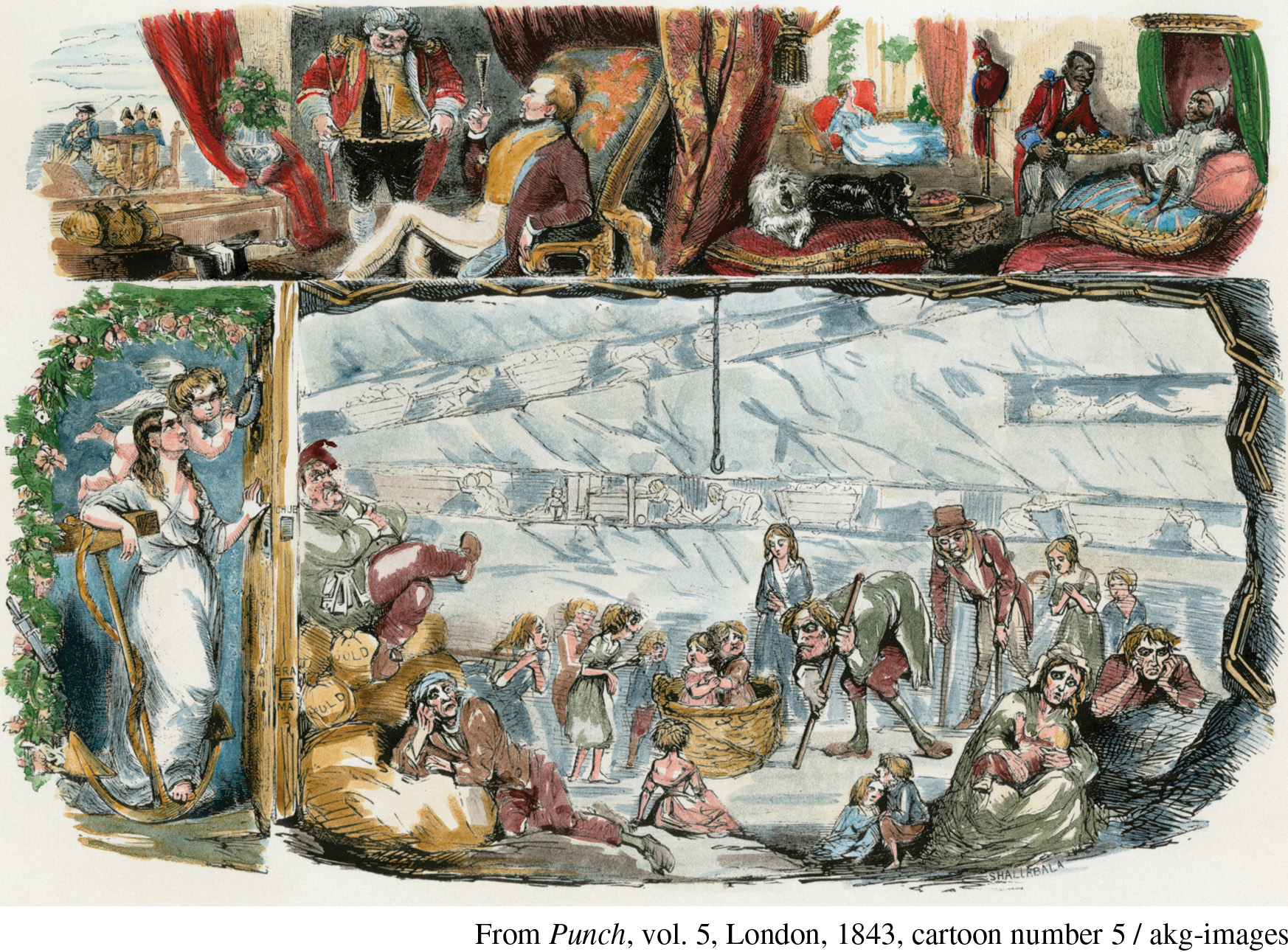Seeing History: Visualizing Class Differences

Class differences occupied a prominent place in the ideology of socialism, but as an everyday experience they were also becoming increasingly visible to everyone. Urbanization brought more people into close contact in the cities, and industrialization created new kinds of social problems for governments and reformers. Newspapers and magazines reached wider audiences as technology speeded publication and literacy improved. In the 1830s, publishers began to realize that regular illustrations could attract new readers. In 1841, a new satirical weekly in London called Punch began publishing “cartoons” (humorous drawings) that made fun of political figures and various social customs. Cartoons soon became a regular feature of newspaper and magazine publication.
This cartoon from 1843 is titled “Capital and Labour.” It depicts the dramatic differences between the life experiences of those with money (“Capital”) and those without (“Labour”). It was drawn and engraved on wood by Robert Jacob Hamerton, an Irish artist who sometimes used the pseudonym Shallabala (if you look closely you will see the name under the woman crouching with her baby on the right).
A tongue-in-cheek editorial accompanied the engraving: “It is gratifying to know that though there is much misery in the coal-mines, where the ‘labourers are obliged to go on all-fours like dogs,’ there is a great deal of luxury results from it. The public mind has been a good deal shocked by very offensive representations of certain underground operations, carried on by an inferior race of human beings, employed in working the mines, but Punch's artist has endeavoured to do away with the disagreeable impression, by showing the very refined and elegant result that happily results from the labours of these inferior creatures. The works being performed wholly under ground, ought never to have been intruded on the notice of the public. They are not intended for the light of day, and it is therefore unfair to make them the subject of illustration. When taken in conjunction with the very pleasing picture of aristocratic ease to which they give rise, the labours in the mines must have a very different aspect from that which some injudicious writers have endeavoured to attach them.”
The reference to children laboring in the coal mines comes from a report to parliament made in May 1842 (The First Report on Children in Mines). Punch is making fun of the unwillingness of the upper classes to confront the misery that makes their comforts possible. On the left an allegory of hope is finding it impossible to gain entry (i.e., there is no hope for the poor and downtrodden). The top half of the engraving might represent a scene of wealth in colonies, as on the right side a black servant attends to another man who may also be black but whose role is unclear. Even the question of poverty at home, then, involved issues of colonialism and imperialism.
Source: Punch, vol. 5, London, 1843, cartoon number 5, 48–49 / akg-images. The original image was in black and white.
Questions to Consider
- What is the role of children in the engraving?
- What are the differences between the people on top and on the bottom of the engraving? How do you recognize the rich and the poor?
- How would this depiction of Capital and Labor compare to the analysis of socialists such as Karl Marx and Friedrich Engels?